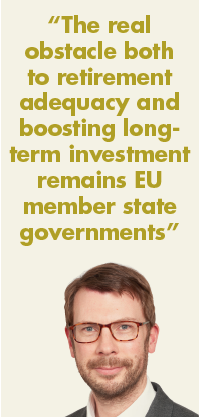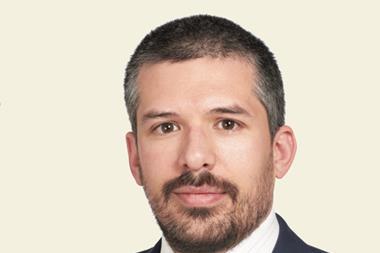Europe has lofty ambitions as it positions the European Green Deal as Europe’s growth plan for the coming decade and beyond.
There is much to do to promote sustainability in Europe and the EU can undoubtedly blaze a trail. But the incoming Commission will also need to maintain its focus on the Capital Markets Union (CMU), the flagship economic policy of the previous Commission. One element of the CMU as announced in 2014 was indeed to foster sustainable, infrastructure and green investment. Despite progress, key elements of the policy remain incomplete.
At the end of last year, Pensioen Federatie, the Dutch pension association called for a renewed focus on the CMU. In particular, it seeks a harmonised withholding tax repayment procedure as the current fragmented approach hinders EU investment. Insolvency laws are also a work in progress.
At the end of 2019, the European Commission appointed 28 experts to a High Level Forum on the CMU, including Eloy Lindeijer, head of investment at PGGM.
The NextCMU High Level Group, which represents “the viewpoint of the real economy” with experts appointed by seven EU finance ministers, has set out to appraise Europe’s market-based financing capacity “with a fresh eye”.
It put pensions and long-term savings at the heart of the CMU and has advocated rebadging the CMU as the ‘Savings and Sustainable Investment Union’.
But a real inefficiency in Europe’s economy is the sparse and patchy framework of long-term pools of retirement capital. Europe’s pension savings gap is sizeable – estimated at €2trn in required additional savings each year between 2017 and 2057. Policies like the PEPP will only go some of the way.
Putting some of Europe’s €7.6trn of cash savings to work in the productive economy will be vital for long-term prosperity – and to kindle the kind of efficient capital markets needed to marshal investment in transformative green technologies and elsewhere.

The real obstacle both to retirement adequacy and boosting long-term investment remains EU member state governments. Most of them face conflicting objectives to improve the incomes of citizens in the short term while at the same time needing to promote retirement income adequacy and productive multi-decade investment in infrastructure, green energy and technology.
Without real wage growth and in the absence of compulsion, European workers will likely be put off long-term pension savings in favour of real consumption today. Private, long-term capital will be at the heart of any plan to boost green growth. Creating long-term focused policies for capital markets to harness investment is hard. But perhaps hardest of all is to create consistency in long-term policy to generate the savings in the first place.
Liam Kennedy, Editor
liam.kennedy@ipe.com


















1 Reader's comment